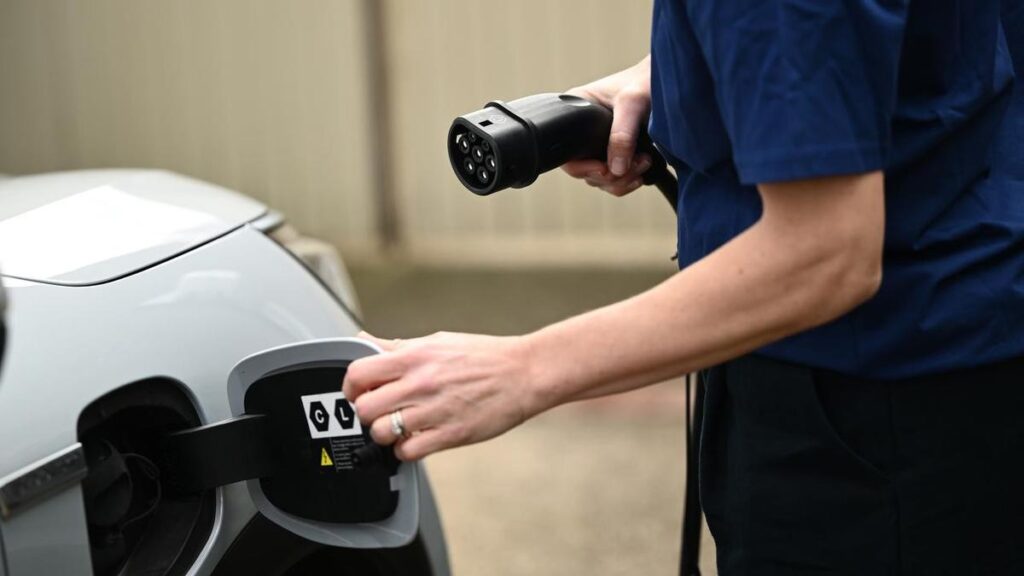
URGENT UPDATE: Vehicle-to-grid (V2G) technology is on the brink of revolutionizing energy consumption in households, with major trials set to launch in 2026. This breakthrough could lead to substantial reductions in power bills, potentially allowing electric vehicle (EV) owners to earn money from their cars.
Dan Adams, co-chief executive of Amber Electric, underscores the significance of this moment: “I’ve been working in this area for 18 years and vehicle-to-grid technology has always been this mythical thing on the horizon. It’s exciting to now be at a moment that it is here and it’s going to be widely available soon.”
V2G technology connects electric cars to the electricity grid, enabling them to serve as powerful batteries while driving. Recent announcements from Origin Energy and AGL reveal that both companies are launching trials for V2G technology, further validating its potential.
Origin Energy is set to begin a trial featuring BYD Atto 3 SUVs and subscription-based StarCharge equipment, with participation limited to 50 customers. Meanwhile, AGL has unveiled a competing trial, also slated for 2026, where it will offer discounted bi-directional chargers to another 50 customers.
The trials aim to address key barriers to V2G adoption, such as concerns over battery degradation. Tim Washington, chief executive of Jet Charge, reassures, “People get very worried about battery degradation through V2G, but it’s an extremely gentle form of energy draw compared to putting your foot on the accelerator.”
The release of Australian bi-directional charger standards in late 2024 will help expand the compatible vehicle market. Currently, brands including Nissan, Renault, Kia, Ford, Audi, Volkswagen, and Polestar are on board, yet major players like Tesla have yet to announce support.
Despite this, Adams reveals that many EVs already on the market are secretly compatible with V2G technology. In a pilot program backed by the Australian Renewable Energy Agency, Amber Electric found that vehicles not marketed for V2G can still function with bi-directional chargers. “Almost every EV on the road today is actually technically capable of vehicle-to-grid,” Adams states, noting that this revelation significantly alters the landscape for EV ownership.
The economic implications are substantial. Participating testers can generate between $2,000 and $3,000 annually by selling excess energy back to the grid during peak demand hours. “We’re looking at $25,000 that you’ll be able to make out of your car over a 10-year life,” Adams emphasizes, revolutionizing the economics of EV ownership.
Commercial strategies are critical as these trials unfold. According to Alina Dini, head of energy and infrastructure at the Electric Vehicle Council, the success of these trials will hinge on how attractive the commercial arrangements are for consumers. Some trials will offer free charging incentives, while others will enable owners to profit from energy sales.
Dr. Dini highlights the potential for V2G technology to position EVs as more appealing choices for consumers. “It is definitely the reason why some people will choose to buy an electric car,” she says, suggesting that the dual functionality of EVs as household batteries could sway buyers away from traditional home energy storage solutions.
As these developments unfold, the energy and automotive industries are poised for a seismic shift that could make electric vehicles not just modes of transportation, but also essential components in the future of energy management.
Stay tuned for further updates on the trials and the impact of vehicle-to-grid technology on your energy bills. The future of driving and energy consumption may be closer than ever.







